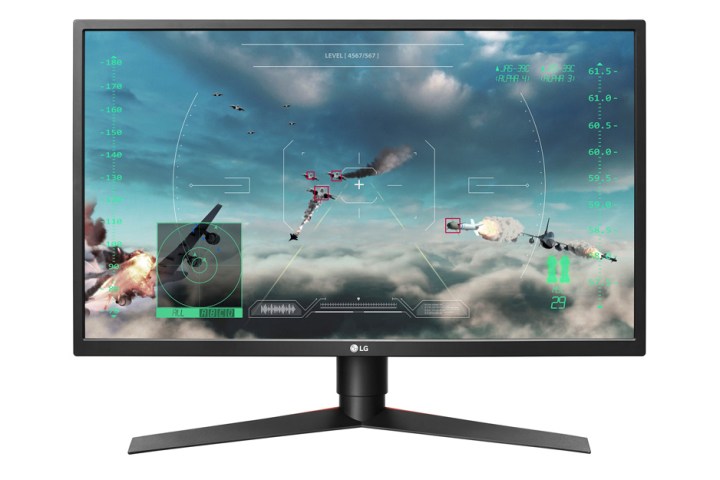
Here are the specifications:
| Model: | 27GK750F-B |
| Screen size: | 27 inches |
| Screen technology: | Twisted Nematic |
| Screen resolution: | 1,920 @ 1,080 |
| Refresh rate: | 240Hz via DisplayPort @ Full HD |
| Sync technology: | FreeSync |
| Aspect ratio: | 16:9 |
| Pixel pitch: | 0.31125mm x 0.31125mm |
| Maximum brightness: | 400 nits |
| Contrast ratio: | Unknown |
| Response time: | 2ms gray to gray 1ms with Motion Blur Reduction |
| Color gamut: | NTSC 72 percent |
| Supported colors: | 16.7 million |
| Ports: | 2x HDMI 2.0 1x DisplayPort 1.2 2x USB-A 3.1 Gen1 (to devices) 1x USB-B 3.1 Gen 1 (to PC) 1x Headphone jack |
| Viewing angles: | 170 / 160 degrees |
| Dimensions with stand: | 24.6 x 18.35 x 10.72 inches |
| Weight with stand: | 13.99 pounds |
| Tilt angles: | -5 to 15 degrees |
| Swivel angle: | -20 to 20 degrees |
| Added height adjustment: | Up to 4.33 inches |
| Pivot: | 0 to 90 degrees clockwise |
| Price: | $549 |
As the specifications show, the panel supports an overclocked 240Hz refresh rate when using a DisplayPort connection. That means the desktop panel updates the screen up to 240 times per second, providing extremely fluid motion. Backing this refresh rate is AMD’s FreeSync technology, which synchronizes the panel’s rate with the frame output of an AMD Radeon-branded graphics card or discrete GPU. Turned off, unsynchronized rates will produce ugly image tearing on the screen.
The desktop panel also includes LG’s 1ms Motion Blur Reduction technology. Toggled on, you will see a reduction of blurring and ghosting that is typically caused when pixels are slow at changing color states. Specifications usually state “gray to gray,” meaning the pixel can change from gray to a color and back to gray again in a specific amount of time. The lower the number, the better the panel can render movement without “artifacts,” such as blurring and ghosting.

In addition to the hardware, LG’s new desktop monitor provides built-in software features too. The on-screen control menu is where you set the refresh rate, toggle on FreeSync, and cycle through pre-set configurations for first-person shooters, real-time strategy titles, general gaming, reading, and more.
Also included is a Black Stabilizer to lighten dark areas where enemies remain hidden, built-in crosshairs, and Dynamic Action Synch that promises crisp, quick on-screen action. Of course, you can always manually make adjustments to meet your needs, such as changing crosshair shapes, lowering or raising the brightness level, changing the aspect ratio, and so on.
LG’s new gaming display ships with an ergonomic stand and detachable base. So far, we couldn’t find the panel listed on Newegg, Amazon, and a few other retailers, so keep checking back if you’re on the market for a FreeSync monitor. The company is expected to reveal a new portfolio of monitors in a few weeks at CES 2018, so you may want to keep tabs on that event as well.


